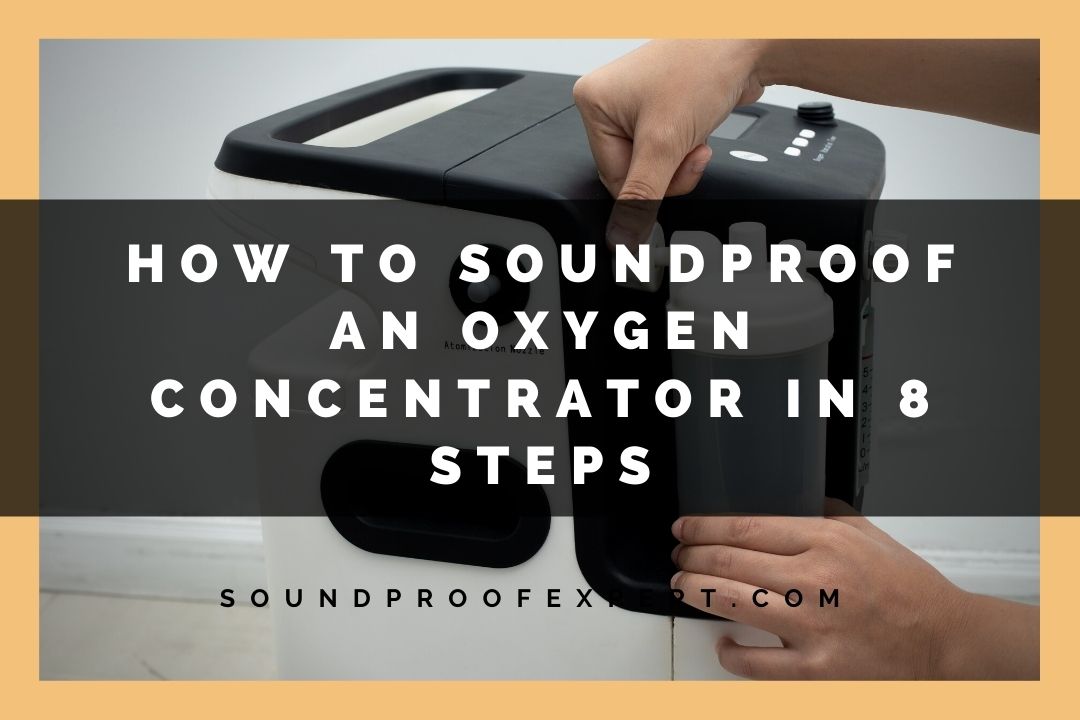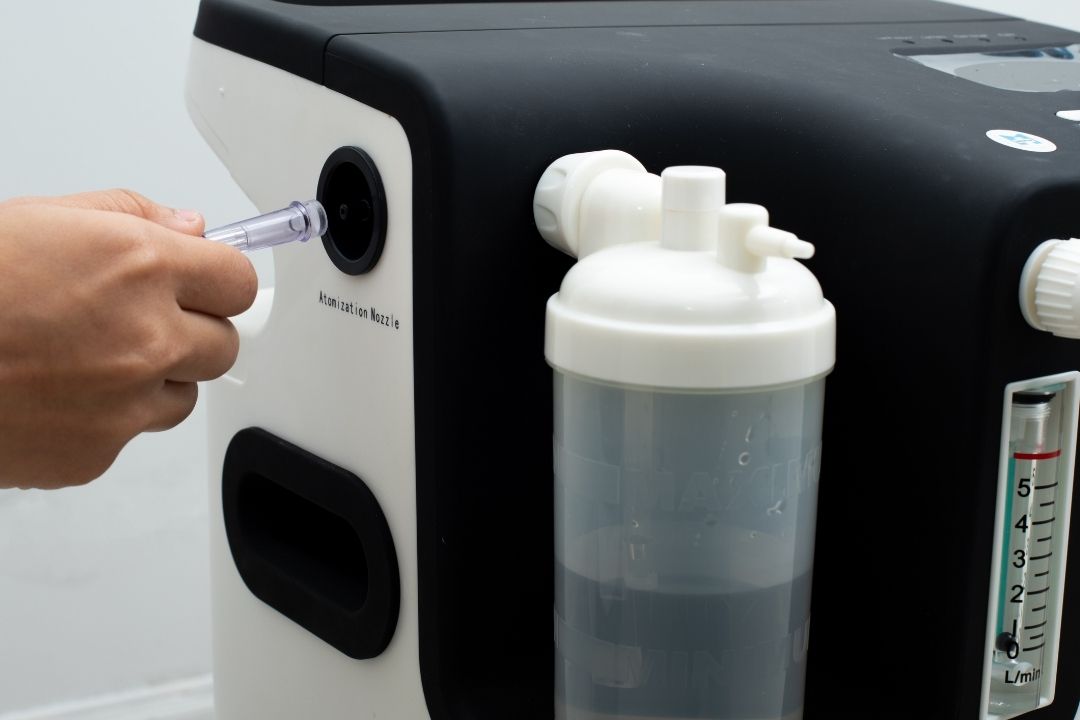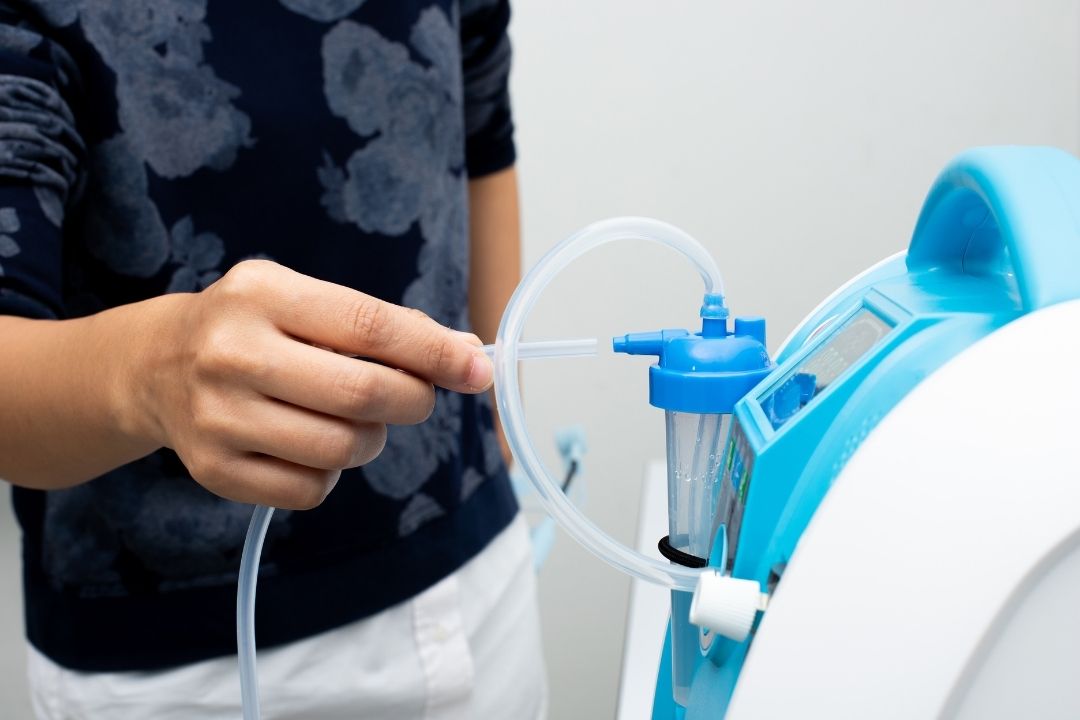
One of the most common complaints about oxygen concentrators is that they are too noisy. While an oxygen concentrator provides crucial health benefits, the constant noise can harm your quality of life.
If you have a noisy oxygen concentrator at home, there are some easy steps you can take to help quiet your machine. A soundproof oxygen concentrator will help you finally get some much-deserved rest.
What You Will Need
Oxygen concentrators pressurize and push out air. Concentrating oxygen is an inherently noisy process, so don’t expect to eliminate all noise completely.
A well-running oxygen concentrator makes about 31-60 decibels of noise, which is equivalent to a range from a quiet room to a normal conversation.
Besides its regular operation, there can be different reasons why your oxygen concentrator is making noise. The tools you will need to soundproof your machine will depend on the cause. Some standard supplies that you should plan to have on hand before you begin soundproofing or that you can expect to buy once you identify the noise source include:
- a screwdriver
- an anti-vibration mat
- some oxygen supply tubing
- some oxygen tubing connectors
- an oxygen concentrator filter kit
- a white noise machine
Soundproofing Steps
Once you have gathered your supplies, you are ready to start troubleshooting your oxygen concentrator for noise. Ensure that your machine is off when executing any steps that require the removal of machine parts.
The following steps are listed from least complicated to more complicated solutions. Some of these steps, such as step 2 and step 4, can be combined for a more effective soundproofing solution.
Identify Obvious Sources of Noise
Before you start taking your oxygen concentrator apart, inspect your machine for any easy-fix problems that could be causing the noise.
For instance, do you keep your vibrating oxygen concentrator on hardwood floors? Are there any obvious signs of damage on the outside of the machine? Are you replacing your filters on time? If the answers to these questions are no, and the source of the noise is not immediately obvious, proceed to step 2.
Check For Loose Parts

Broken or loose parts on your oxygen concentrator can be noisy when the machine is on.
The cabinet, the oxygen concentrator’s plastic exterior, is one part of the machine that is particularly prone to damage and loose screws. The cabinet is removed regularly for cleaning and repairs, which causes wear and tear on the part.
Use a screwdriver to check and tighten any loose screws on the cabinet. If the cabinet is damaged, you may have to order a new one. Since each brand is slightly different, you will have to contact your manufacturer for replacement parts.
Clean Your Filter
A dirty filter can cause your concentrator to make excessive noise. If you have a reusable filter, make sure that you are washing it regularly per the instructions. If you have a replaceable filter, make sure to change it every 6 months to a year.
Oxygen concentrator filter kits are widely available, but check that your machine does not require a special filter before purchasing.
Get An Anti-Vibration Mat
Leaving the oxygen concentrator on hardwood floors can increase the noise output due to the machine’s vibrations.
To reduce the vibration, place your machine on top of a rug, towel, or some padding. Be aware that the oxygen concentrator can emit dust and dirt, so do not put it on something that you don’t want ruined.
If a rug or towel does not help muffle the sound, you can get an anti-vibration mat. Anti-vibration mats are often used for noisy appliances, such as washing machines and dryers, and can help reduce oxygen concentrator noise as well.
Get More Oxygen Tubing

If you want a quick soundproofing fix without conducting major repairs, you can add more oxygen tubing so that you can leave the machine outside of your room.
Oxygen tubing typically comes in 25 feet and 50 feet lengths. If your current tubing is less than 50 feet and 50 feet is enough for you, then all you need to do is get a 50-foot oxygen supply tube.
However, if you want to lengthen the tubing beyond 50 feet, you will need to get oxygen tubing connectors, in addition to more tubing.
Once you have the longer tubing in place, you can leave your oxygen concentrator in another room and enjoy a good rest.
Get A White Noise Machine
If all else fails and you can’t quiet your oxygen concentrator or leave it in another room, consider getting a white noise machine to drown out or mask the sound.
The white noise machine may be particularly helpful at night when you are trying to go to sleep. If your oxygen concentrator is not very noisy, you could turn on a ceiling or floor fan instead of using a white noise machine.
Professional Repairs May Be Necessary
Tightening the screws on the oxygen concentrator cabinet or replacing a filter are fairly easy tasks. However, damaged parts inside the machine may not be as simple to repair and will likely require professional assistance. Besides, it is always a good idea to have your machine checked out by a professional technician annually.
One source of noise inside the machine could be a broken spring. The oxygen concentrator engine rests on springs, and broken springs can cause the engine to bounce around inside the machine. The only way to permanently fix this problem is to get a new oxygen concentrator. For temporary relief, you can tilt the machine to the side where the springs are intact.
The muffler can also go bad over time and require professional repair or a full replacement. There are also several types of valves inside the oxygen concentrator that can be damaged or break and result in excessive noise.
If you are hearing a high whistling noise, a lack of lubrication can be one possible cause.
Be aware, though, that an oxygen concentrator requires special lubricant that is not flammable, so this is another problem that will likely need to be addressed professionally.
Never Cover Your Machine
If you have tried all of the above steps and nothing has helped, you might be tempted to improvise a soundproofing solution. If you are thinking of getting creative, please remember to never cover your machine. Oxygen concentrators need to have plenty of room to take in and expel air, otherwise, they can be a health and fire hazard.
Never back your concentrator against a wall. Covering your machine with something or putting it in a container are also potential hazards.
While we encourage you to leave your machine in another room with the proper oxygen tubing, make sure you are not leaving your machine in a closet or another confined space.
Conclusion
Hopefully, these steps can help you soundproof your oxygen concentrator and get some rest. We encourage you to leave any comments or questions you have about soundproofing your oxygen concentrator below.
Since there are so many different oxygen concentrator types, noise problems can vary from brand to brand. Any additional details that you can share about your machine can help us better tailor a response to your situation.
Ultimately, if the repairs and adjustments we have outlined are not enough to quiet the noise, consider getting a different type of machine altogether. Oxygen concentrator manufacturers are starting to recognize how disruptive noisy machines can be and are designing oxygen concentrators that are quieter than ever.
